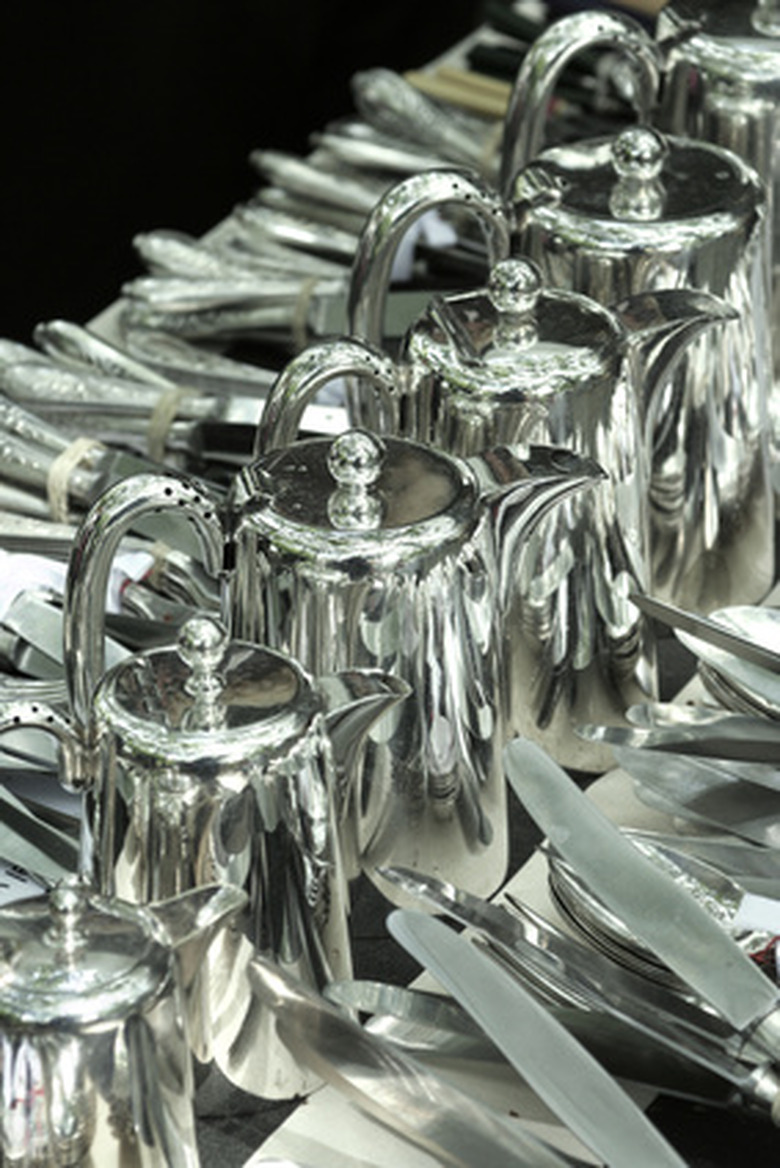What Is Silver Alloy?
A silver alloy is a metal that contains silver and one or more additional metals. Since silver is a very soft metal and highly reactive to the air, it is typically used as an alloy.
Alloy
Alloy
An alloy is a solid solution that is partially or completely composed of one or more elements of metal. Alloys typically have different properties from the individual metals that compose them.
Why Create Alloys?
Why Create Alloys?
Alloys typically have enhanced properties compared with the individual metals that compose them. For example, steel is a much stronger metal than iron, which is the primary component of steel.
Types of Silver Alloys
Types of Silver Alloys
Various types of silver alloys include sterling silver, Britannia silver, electrum and shibuichi.
Uses for Common Silver Alloys
Uses for Common Silver Alloys
Silver alloys are commonly used in the creation of jewelry. Sterling silver (92.5 percent silver and 7.5 percent copper) and Britannia silver (95.84 percent silver and 4.16 percent copper) are cheaper than gold or platinum. They are also used to make tableware and are used as currency in many nations.
Uses for Other Silver Alloys
Uses for Other Silver Alloys
Electrum, a naturally occurring alloy of silver and gold with sometimes trace amounts of copper, platinum or other metals, was used by ancient societies as currency and to coat jewelry and statues. Depending on its trace metals, electrum can be an excellent conductor of electricity. Shibuichi, an alloy consisting of mostly copper and 15 to 25 percent silver, was used in Japan to coat swords.
Cite This Article
MLA
Berger, Maxim. "What Is Silver Alloy?" sciencing.com, https://www.sciencing.com/silver-alloy-7239734/. 24 April 2017.
APA
Berger, Maxim. (2017, April 24). What Is Silver Alloy?. sciencing.com. Retrieved from https://www.sciencing.com/silver-alloy-7239734/
Chicago
Berger, Maxim. What Is Silver Alloy? last modified March 24, 2022. https://www.sciencing.com/silver-alloy-7239734/
